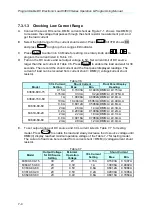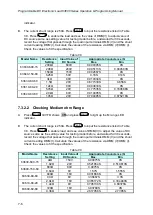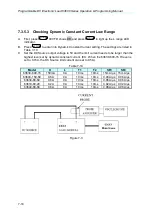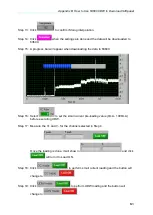
Appendix A Precautions for Loading Battery
A-3
current to facilitate load and it should be able to cutoff in time when
the internal is aging short circuited.
R
: It is suggested to install the resistor of 100k
Ω or above to avoid giving Electronic Load
huge voltage in a sudden.
Fuse
: First calculate the kW for discharge and select a proper fuse.
Note
If two or more Electronic Loads are paralleled for discharge test, the front
terminal of each Load has to add a fuse for protection.
A.1.2 Operation
Before inputting voltage to Electronic Load, switch to No.1 NFB to make the current go
through R resistor to prevent damaging or aging the MOSFET from high voltage sent to
Electronic Load internal in a sudden.
Switch to No.2 NFB after 5 seconds and then start battery discharge testing.
To stop discharge test, first press Load OFF on the Electronic Load and then switch No.2
NFB to OFF and last switch No.1 NFB to OFF. The whole discharge test stops and the
battery is cutoff from Electronic Load.
For example:
How to install the wire to discharge 2kW when using 300V (maximum current is 100A) for
battery discharge?
(I = P / V = 2000W / 300V = 6.6A)
When NFB is selected, since the battery maximum current is 100A, the NFB should be
smaller than 100A; therefore it is suggested to use NFB of 20A.
When R is selected, it is suggested to use the resistor of 1W, 100k
Ω
When Fuse is selected, it has to be larger than loading discharge current. In this case,
the discharge current is 6.6A; therefore it should use fuse of 10A.
Summary of Contents for 63600 Series
Page 1: ......
Page 2: ......
Page 8: ...vi...
Page 9: ...vii...
Page 10: ...viii...
Page 16: ......
Page 40: ......
Page 110: ...Programmable DC Electronic Load 63600 Series Operation Programming Manual 4 34...
Page 132: ......
Page 252: ......








































